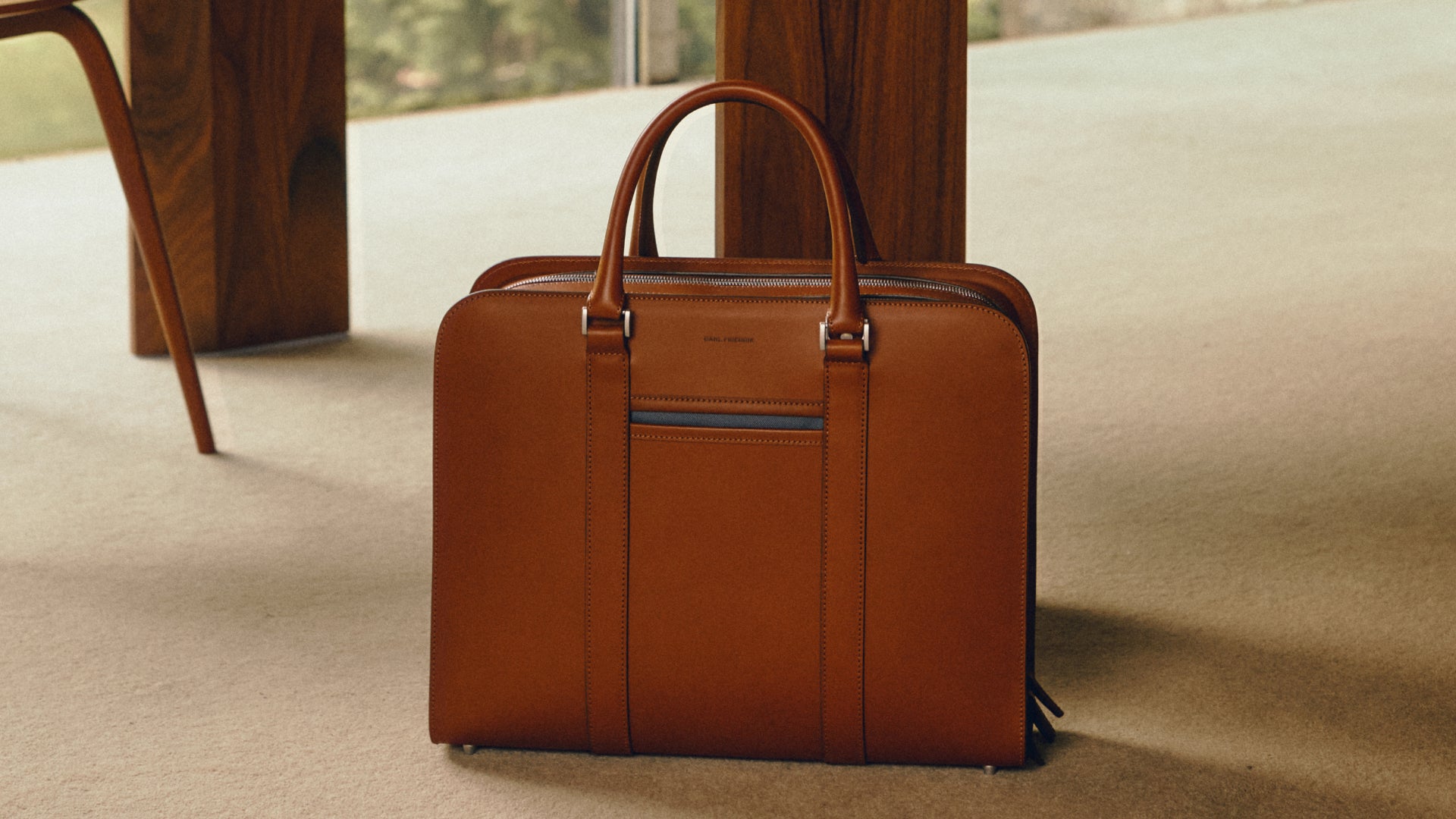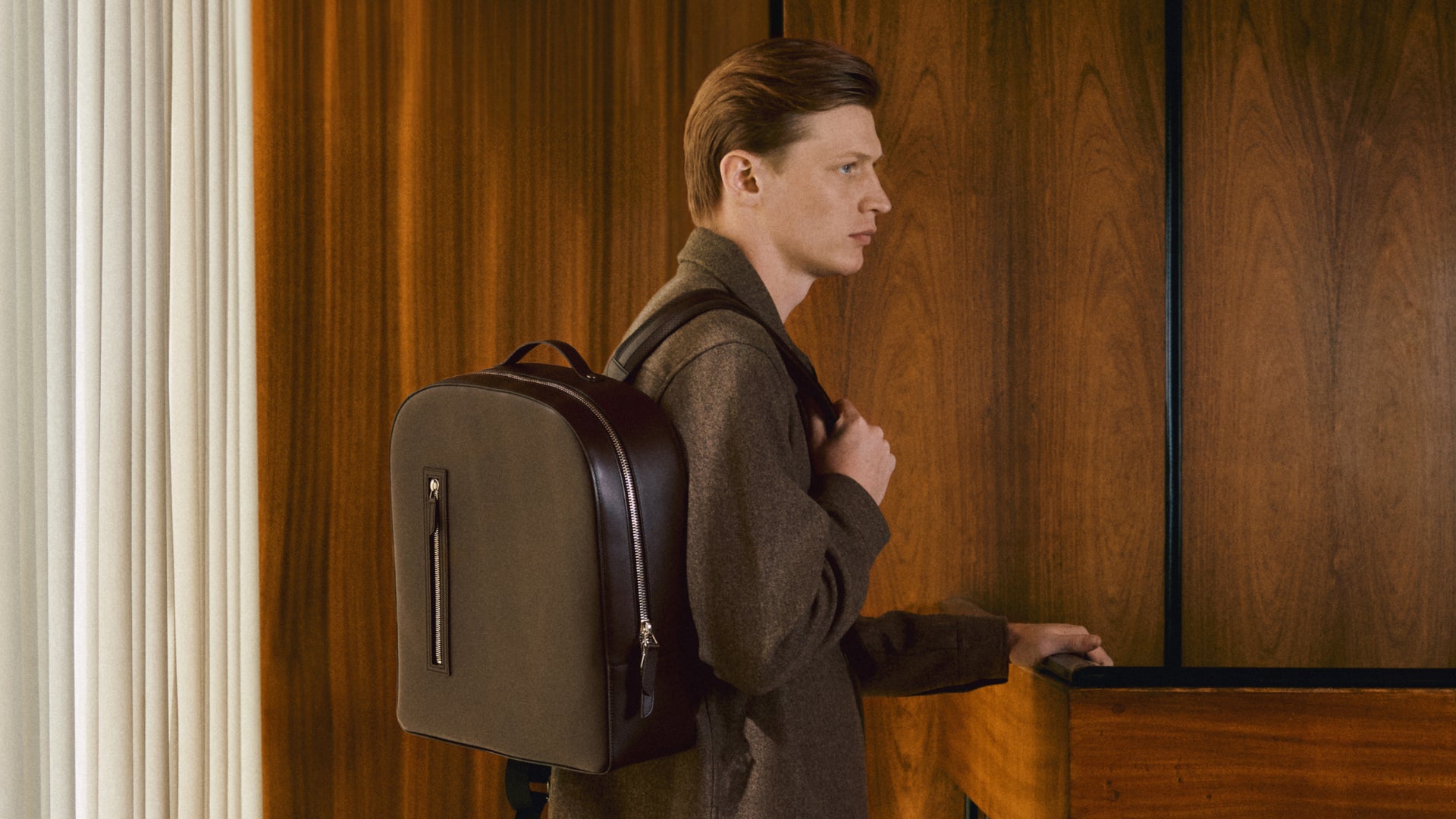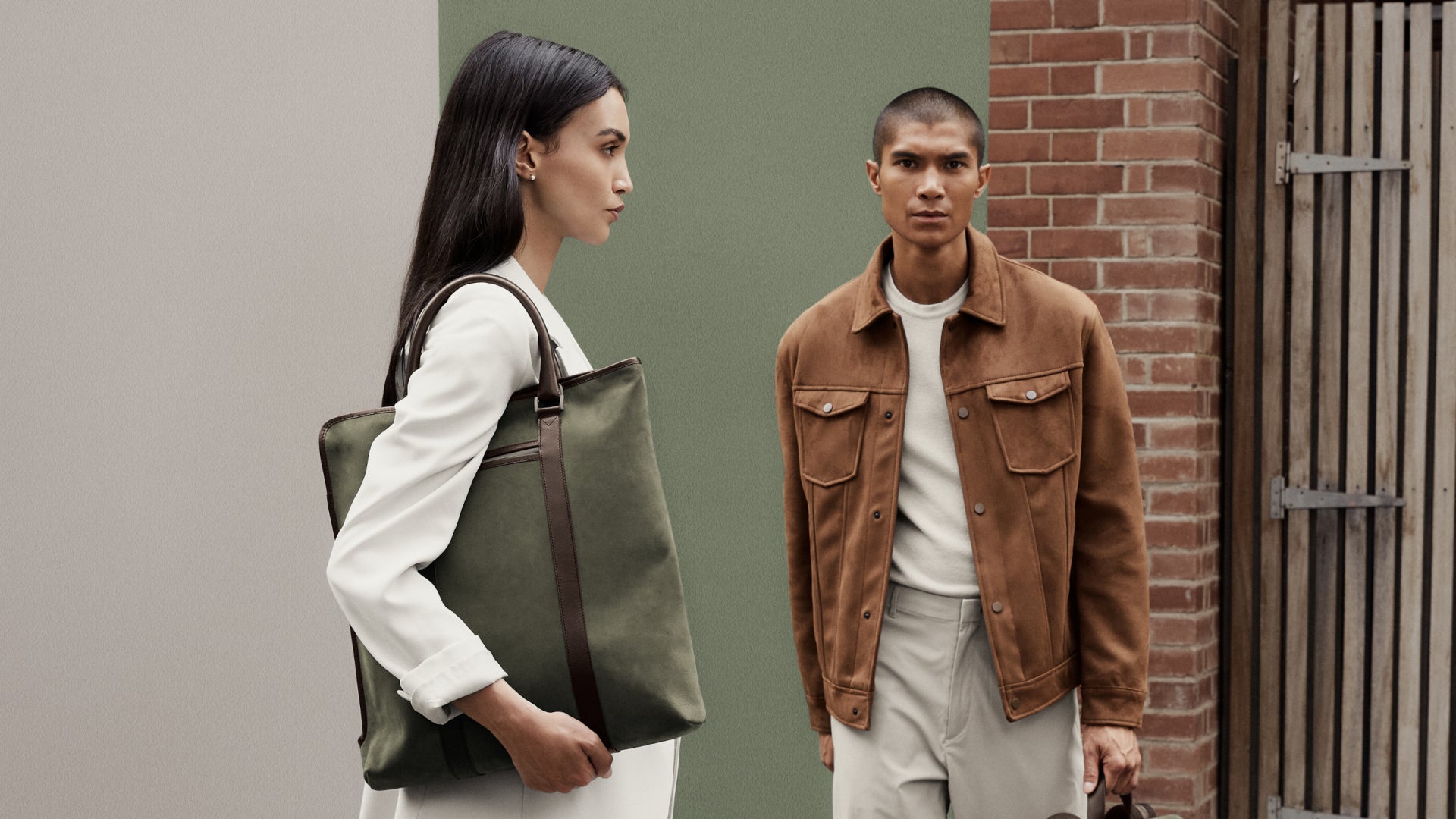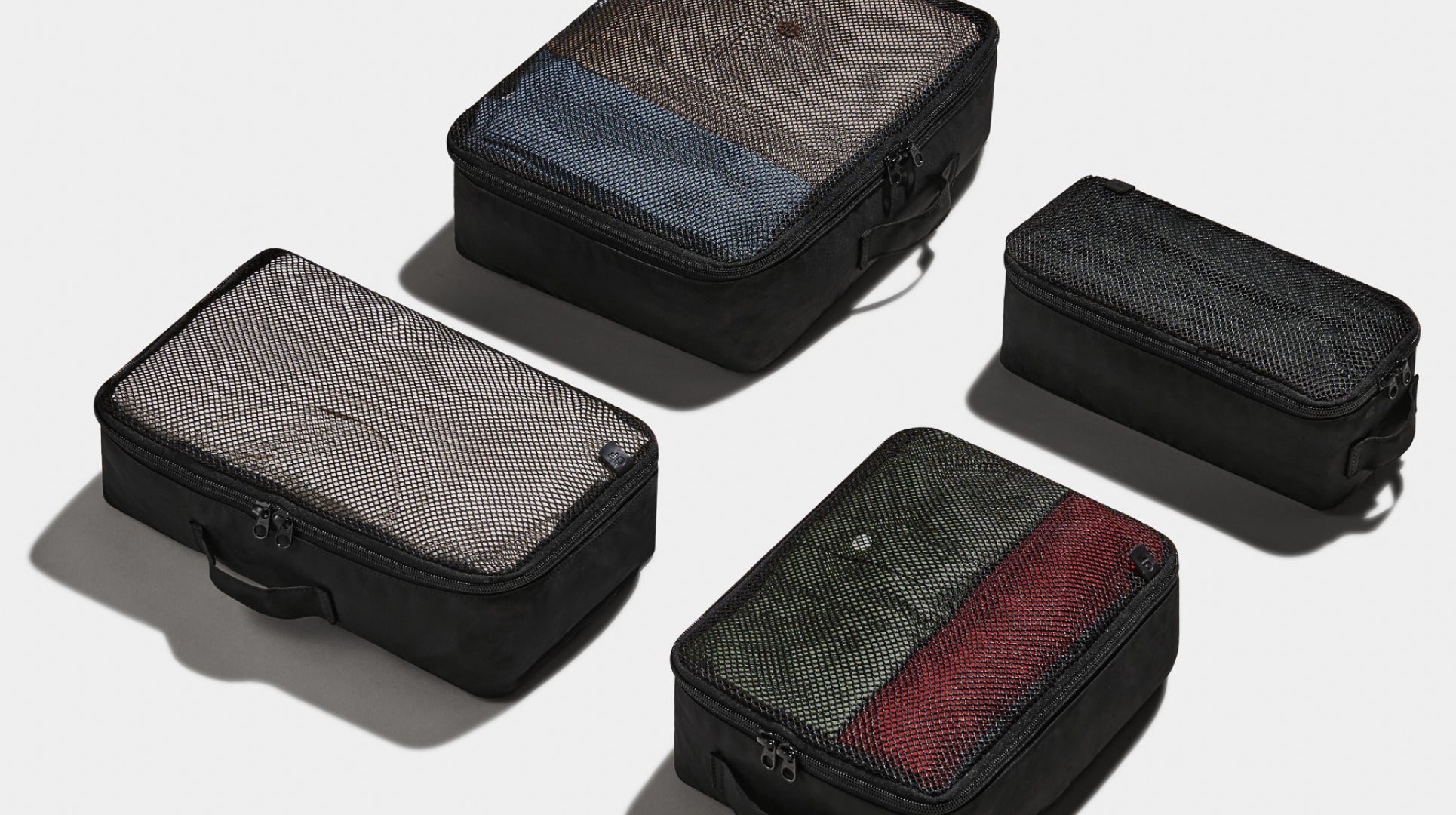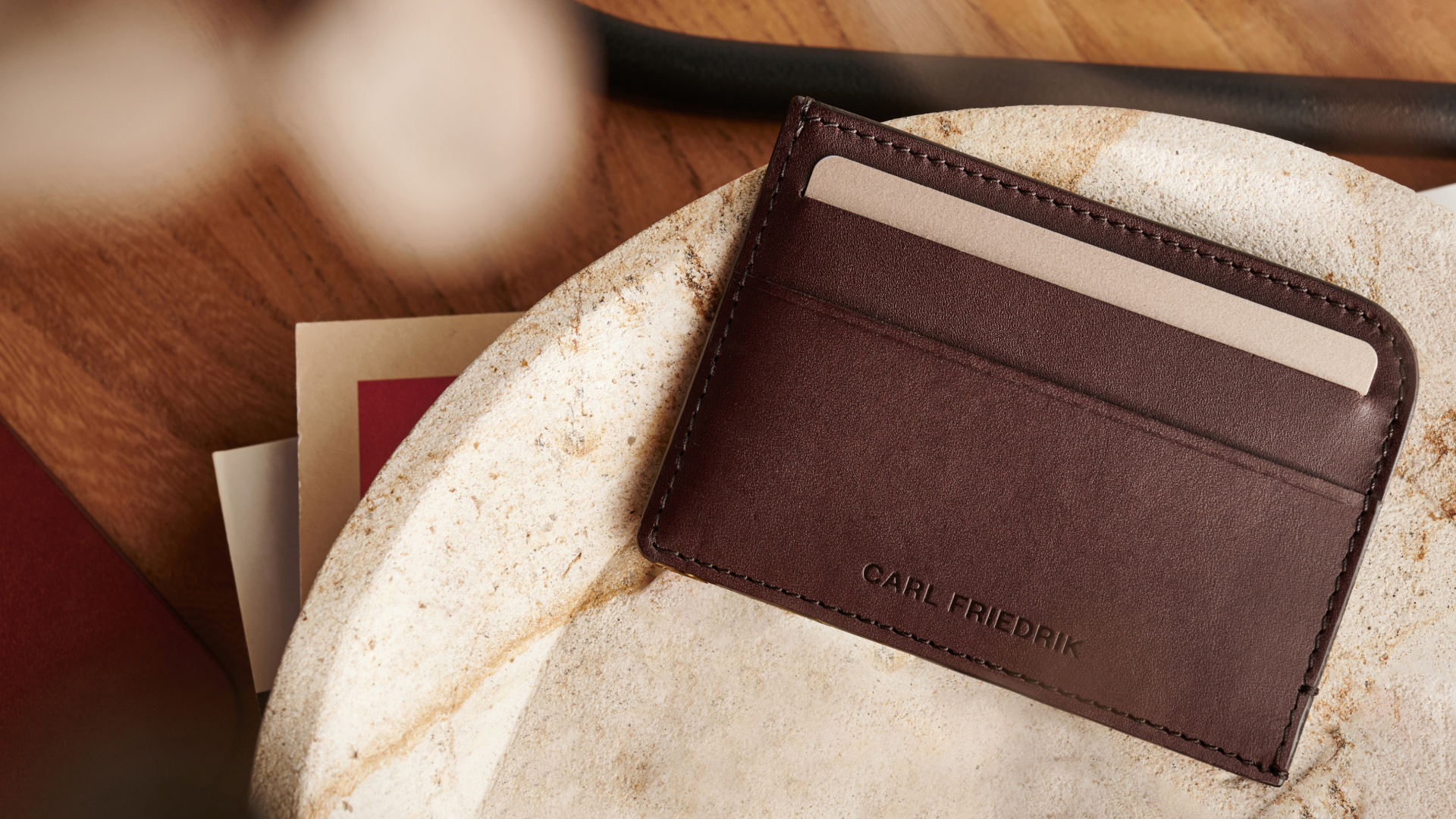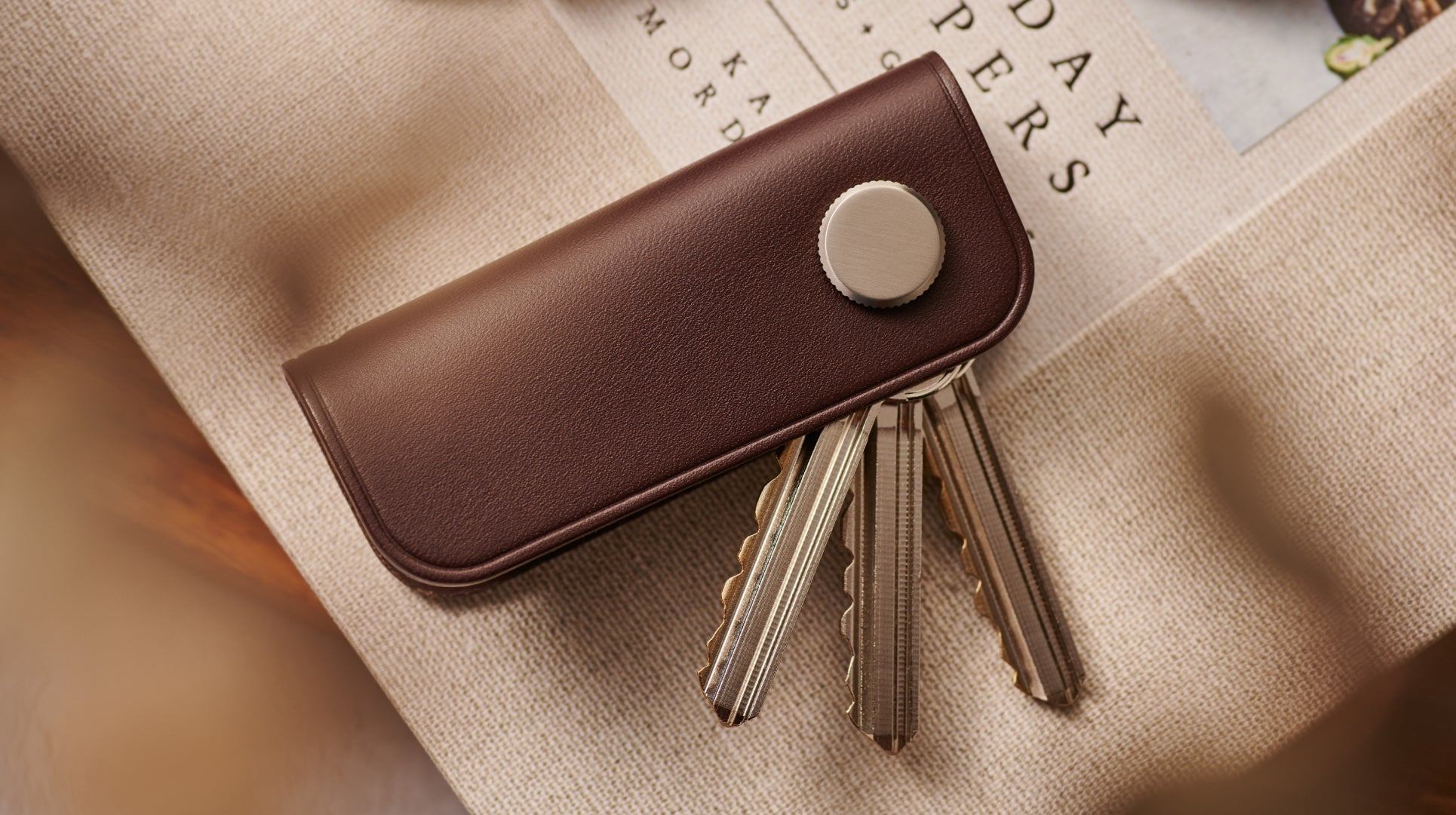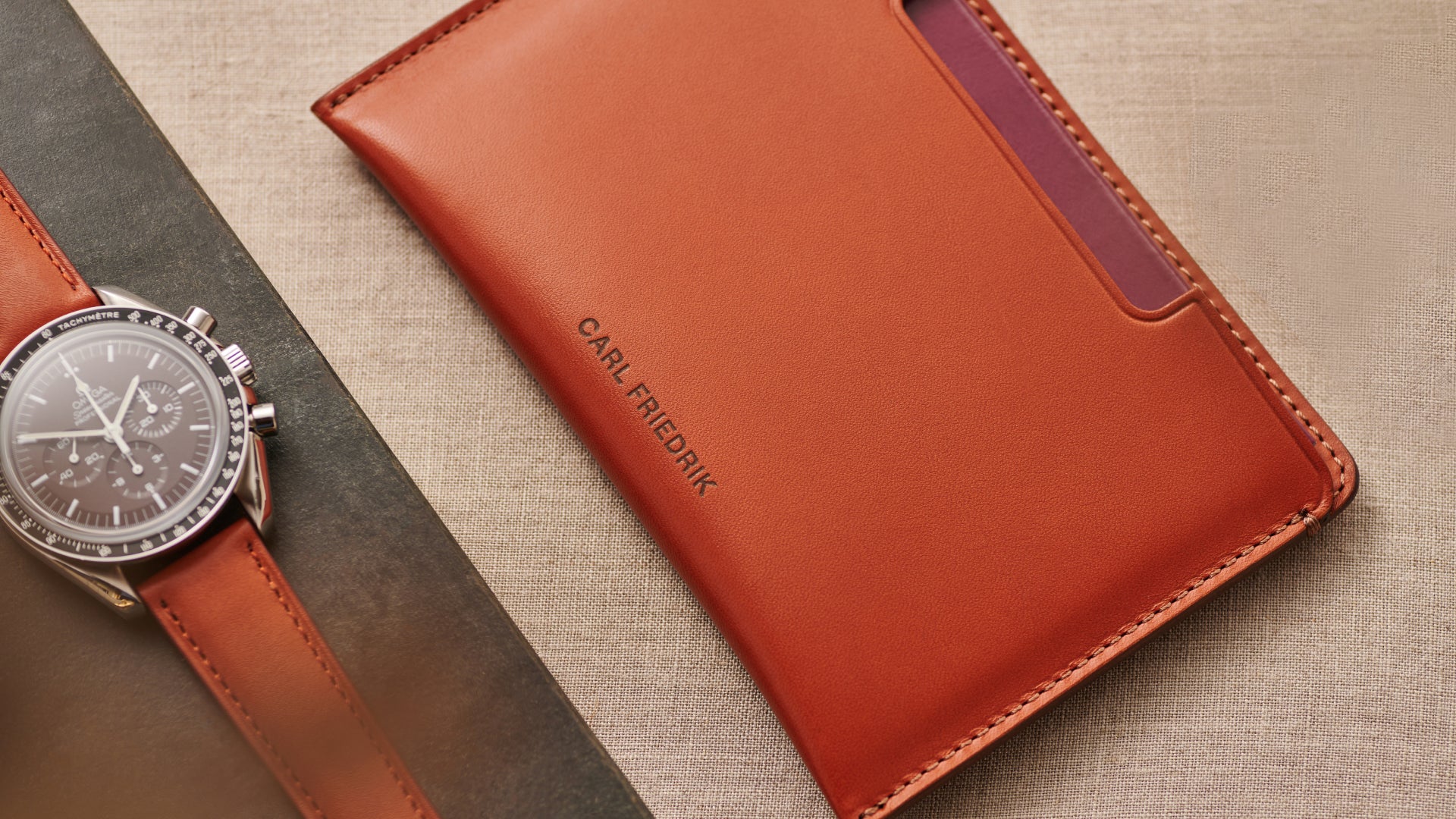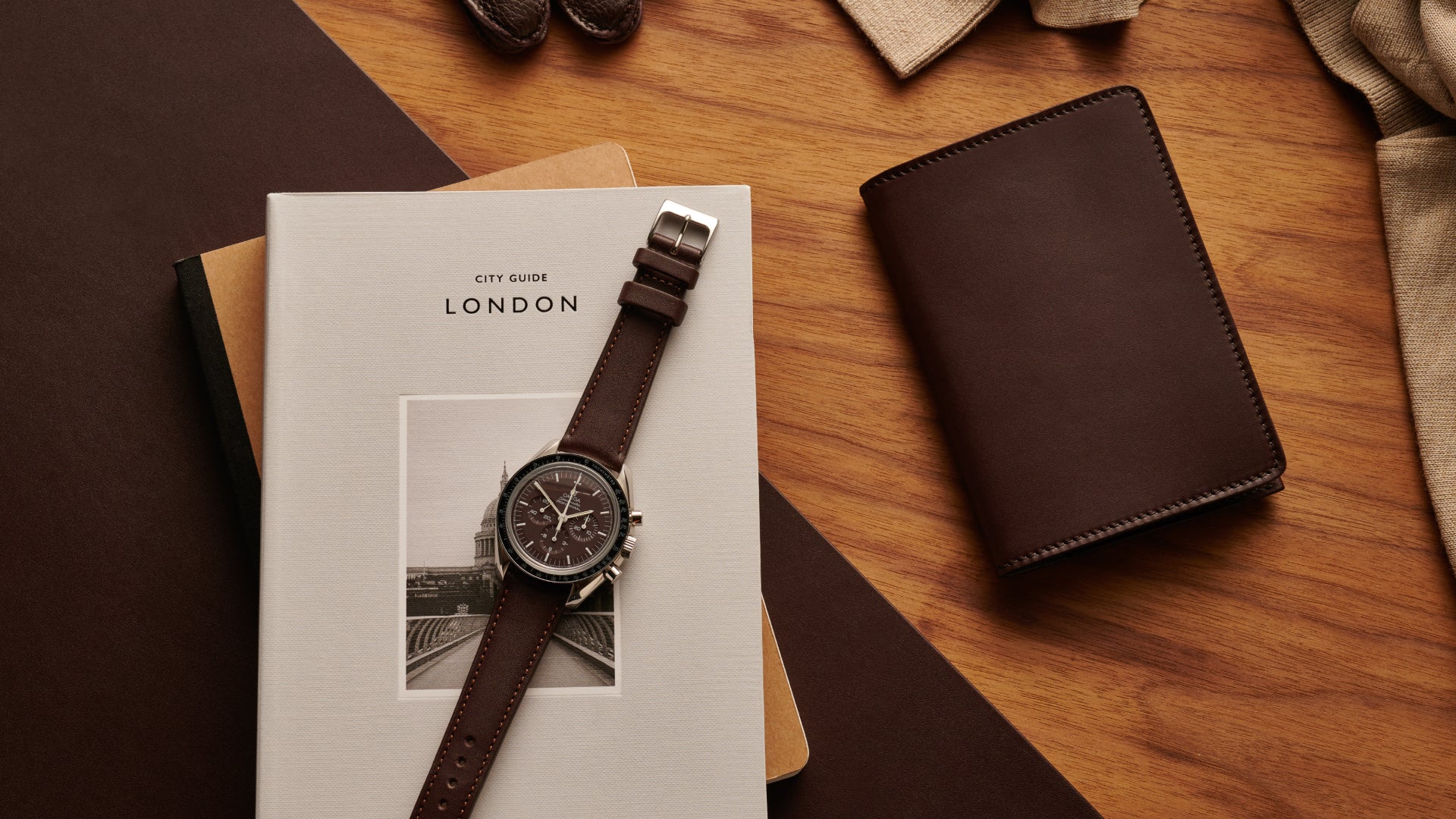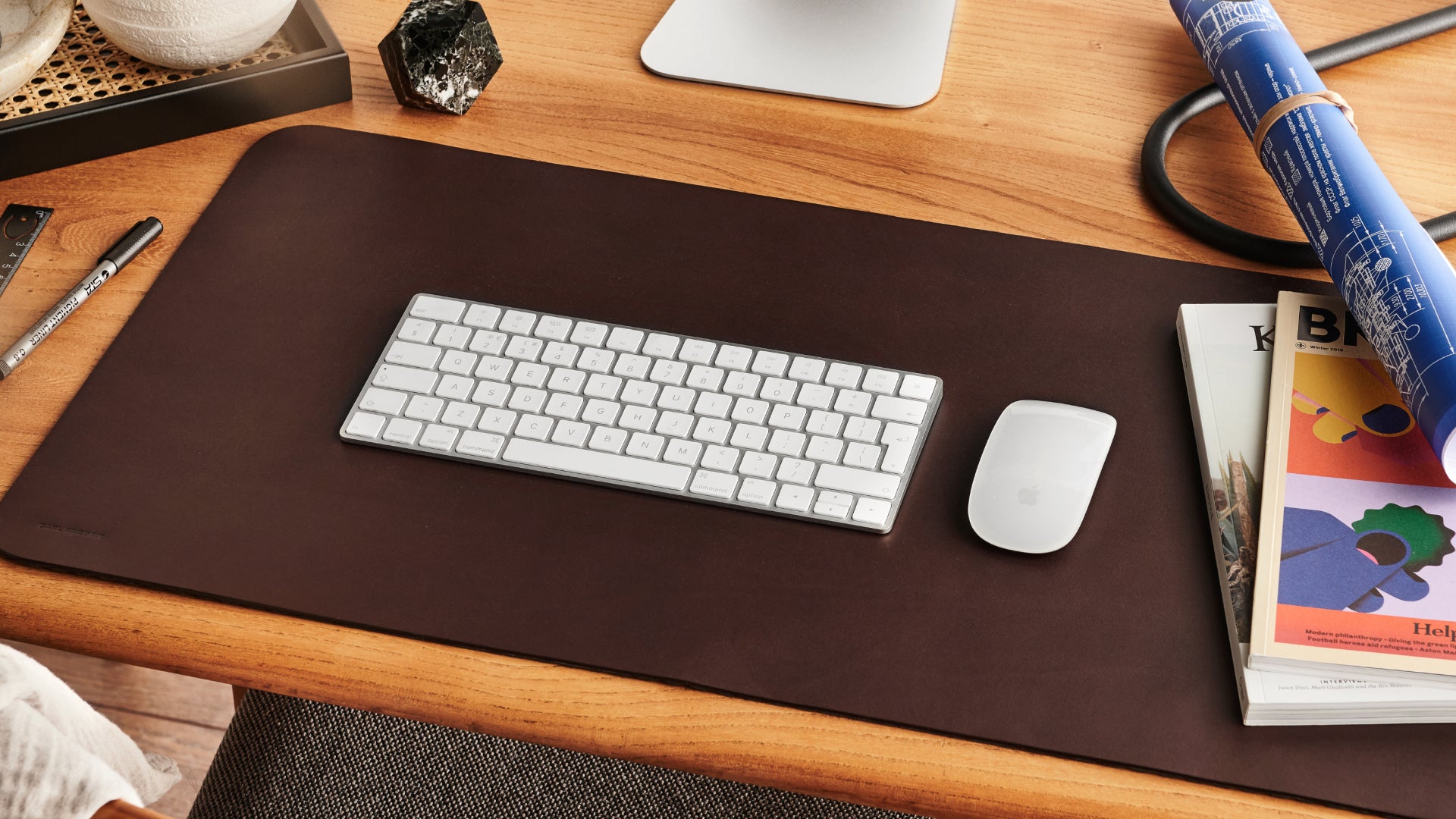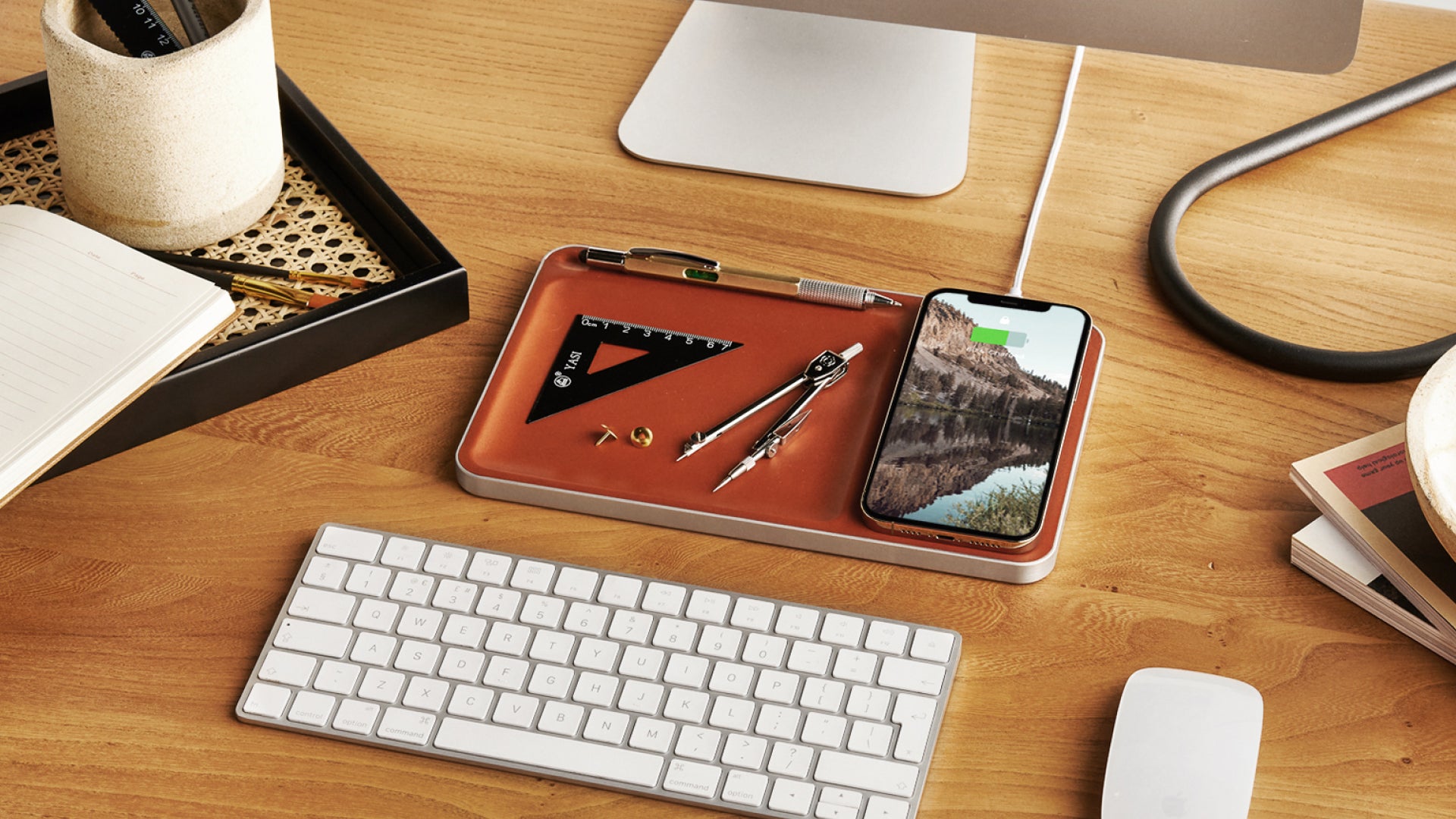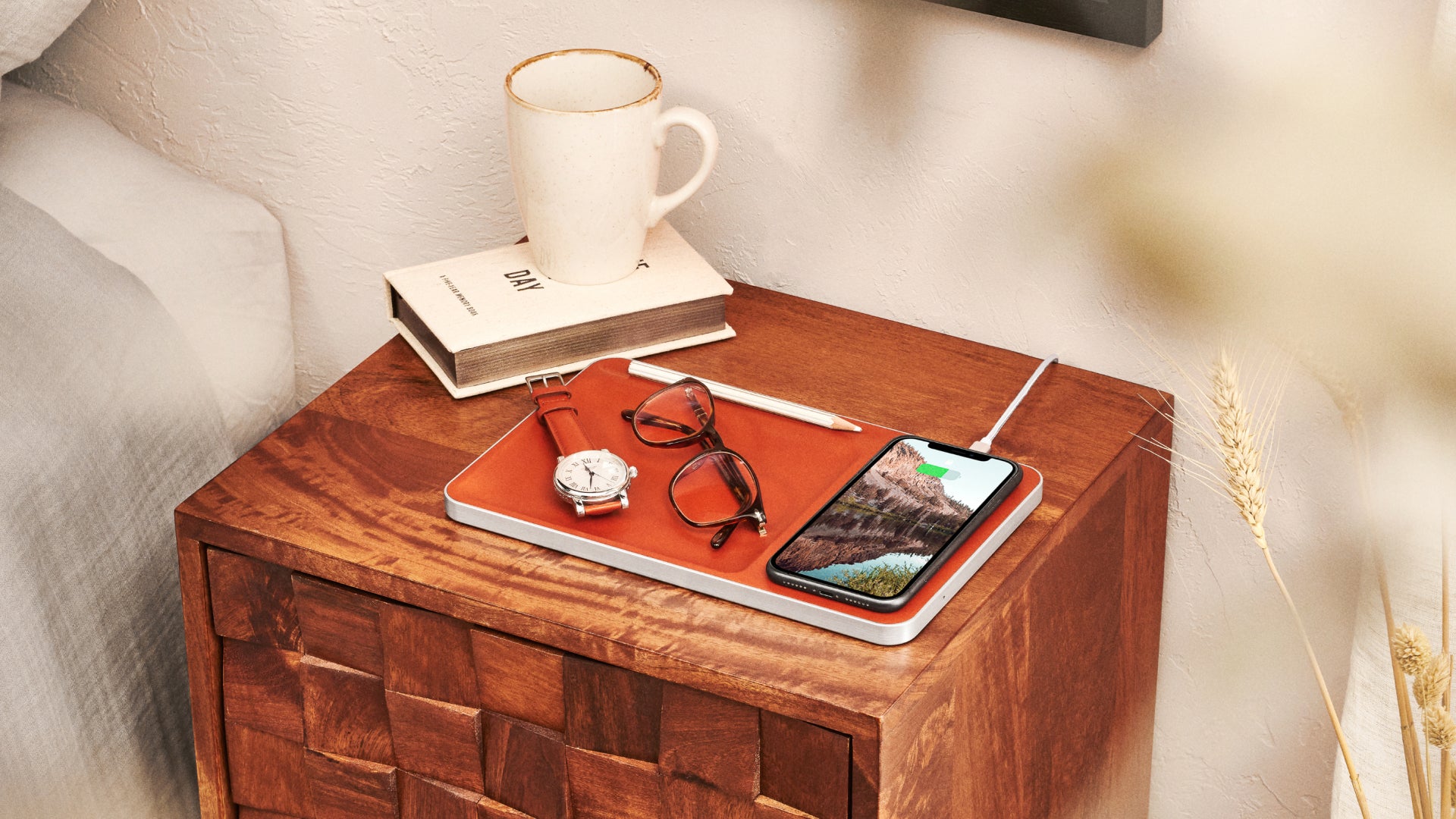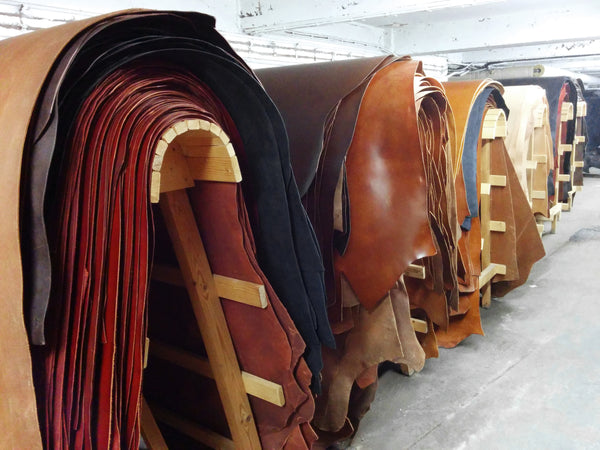Suede and nubuck have a lot in common, but the truth is, explaining the differences between these two softer leathers can get a little fuzzy.
Ever wonder why Elvis Presley was so insistent that you could do just about anything, but when it came to his blue suede shoes, all bets were off? Neither do we.
But while the King’s shoe obsession may not be at the top of your list of enquiries, you may have wondered when it's beneficial to purchase leather goods made with nubuck vs suede.
To that end, we set out to explore the origins of each material, how they are crafted and the best way to care for them.

What is suede?
While suede and nubuck possess a broadly soft, velvety texture and nappy finish that contrasts with the smoothness of traditional leather, the two also have distinct differences that are vital to understand when purchasing softer leather goods.
The word suede comes from the French phrase, ‘gants de Suède’, which aptly translates to ‘gloves from Sweden’. Before we explain exactly how suede is produced, let’s start with the basics. An animal’s hide is made up of several layers, each with different characteristics. These layers are split (or separated) using machinery when they arrive at a tannery, and go on to become different types of leather.
The top layer has dense, tightly-packed fibres that make it water-resistant and highly durable. This makes sense when you consider that the outer layer of an animal’s skin is exposed to the elements. The fibres within the lower layer are less tightly packed together or ‘looser’. Leather produced from this part of the hide is consequently less robust and resistant to water, although it has other advantageous characteristics.
Suede is made by taking leather cut from the softer and more pliable lower layers (the hide’s corium, to use the technical language), and then sanding the inner surface. The suede’s fibres are loosened further. They become raised as a result of the sanding, giving the leather a velvet-like, napped finish.
A range of bovine animals, deer and pigs are used to produce suede leather. The softness of the material depends on both the type and age of the animal. Thicker hides usually come from older cows and produce a somewhat tougher material, while calves are known to produce a softer variety of suede.

What is nubuck?
Nubuck is made from the outer-facing layer of an animal’s hide, the full-grain section. This layer is sanded down to make a kind of napped leather, which is thicker and more durable than suede; this boils down to the material’s superior fibre structure, which is elaborated on in the previous section.
After the sanding process, the nubuck can be dyed and treated for a uniformly smooth and consistent finish. However, many manufacturers choose to embrace imperfections, believing that it adds to the character of the leather.
Traditionally, nubuck was made from deer or elk, but these days most nubuck is sourced from calfskin due to its softness.

Origins of nubuck and suede
Unlike suede (which was immortalised in Elvis Presley’s rockabilly cover of Blue Suede Shoes), nubuck encountered initial success when the Duke of Windsor travelled to the US in the 1930s wearing Oxfords made from this new form of leather.
Nubuck is now widely recognised as the material used in the production of Timberland’s iconic boot. An accessory that has been embraced by everyone from the American hip-hop strars of the noughties to British working men.
Back in the 19th century, Swedish artisans invented a way to use the soft, inner layers of the hide to create luxurious, velvety gloves for wealthy women.
Because of its lavish look and delicate feel, demand for the soft luxury leather spread throughout Europe, and suede eventually became a material of choice for the most famous fashion houses of the 20th century, including Givenchy, Paquin, Gucci and Hermes.
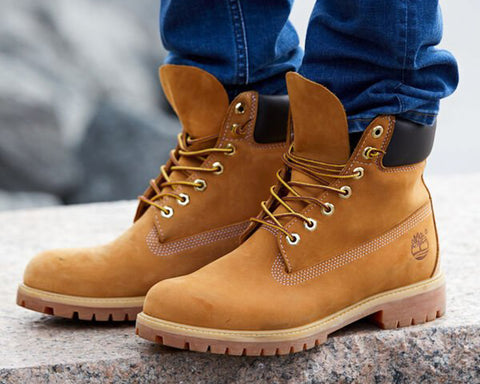
Benefits of nubuck and suede
Now you're aware of the differences between nubuck and suede, let’s take a closer look at each material’s key advantages.
Nubuck
Breathability
The splitting process causes the proteins to break down, leading to a porous material that is more breathable than other forms of leather. Hence why it’s great for manufacturing shoes.
Aesthetic appeal
Like suede, nubuck has a similarly velvety feel, however the knap is more pronounced, giving it a semi-rugged aesthetic.
Durability
Nubuck comes from the strongest part of the hide. Thicker and robust, it’s more suitable for frequently used products, like nubuck shoes. It will also return to its original colour after drying out, unlike suede.
Suede
Luxurious feel
Suede has a soft, supple and smooth surface that goes a long way to explaining why it is associated with luxury.
Pliability
The often thin, lightweight texture of suede gives it a certain dexterity, allowing leather workers to create a wide range of accessories.
Price
Suede tends to be less expensive than nubuck because it is taken from an inferior part of the hide. However, this is not always the case.
Easy maintenance
The simple application of water and stain repellents will go a long way in protecting suede.

Disadvantages of nubuck and suede
Nubuck
Price
Nubuck products are generally more expensive than suede alternatives because they come from the strongest part of the hide.
Inferior elasticity
The tough and thick nature of nubuck makes it less manoeuvrable and harder to work with than suede.
Prone to scratches
Nubuck’s texture makes it more susceptible to scratching than suede. However, this can actually add to its somewhat imperfect, rugged appearance.
Suede
Durability
Suede generally has an inferior durability compared with nubuck. This relates to the grain structure and thickness of the material. That said, premium suede is still a robust fabric.
Permeability
The porous attributes that make suede so soft and velvety also create an avenue for water to seep into and damage the material. Nonetheless, waxed suede is extremely common and offers both waterproof and stain-resistance.
Prone to collecting dirt
Suede's nap collects dirt and dust due to the porous grain structure. This means it requires regular cleaning and specific treatments.

Uses of nubuck
Nubuck is particularly hardwearing. So it is leveraged to produce goods that are frequently exposed to the elements or human contact, such as everyday wallets, elegant leather bags and purses.
Nubuck shoes are extremely popular, from Timberlands to Birkenstock sandals and Ugg boots. Again, this relates to the material’s abrasion resistance. Here’s a selection of other nubuck products.
- Furniture. Our sofas and chairs need to be lined with a material that is strong yet plush in equal measures. Nubuck certainly fits the bill.
- Backpacks. Nubuck is increasingly popular when it comes to designing contemporary backpacks with a utilitarian, rugged appeal.
- Everyday accessories. Including wallets, belts and pouches.

Uses of suede
Softer and thinner than nubuck leather, suede is used for a variety of accessories, outerwear and footwear.
Its pliability makes it easy to craft, which is why, despite some issues with durability, it is extremely versatile. The napped, fuzzy sensation of suede is perfect for products that come into contact with our skin, such as moccasins and other high-end shoes, designer clothing and upholstery. Below are some more examples of consumer goods crafted using suede:
- Fashionable accessories. Suede’s luxurious appearance and flexibility makes it ideal for producing handbags, backpacks and belts.
- Footwear. The smooth napped texture of suede is extremely comfortable and gives many types of loafers, brogues and mules their signature appearance.
- Outerwear. From the fringe jackets made famous in the 1960’s to the blazers and jackets that have permeated the fashion world in the 21st century.

How to clean nubuck
Nubuck is easy to maintain because it requires very little specialist equipment. A nubuck brush and a waterproofing product are usually all it takes to keep this luxury leather in top shape. Nubuck is naturally a hardwearing leather, but a bit of care and treatment on your behalf will only make a pair of, say, nubuck shoes, even more resilient.
You’ll need these tools: nubuck bristle brush, suede leather eraser, microfibre cloth and water repellant.
Step 1: Blot. Never use heat to dry nubuck leather. Instead, blot with a microfibre cloth and allow the leather to dry for 24 hours.
Step 2: Brush. Using a soft nubuck bristle brush, remove as much dirt as possible by brushing in a circular motion. Do not spend more than a few seconds on each section.
For a more thorough clean, moisten the brush in warm water mixed with a mild soap, or use a suede cleaner and gently scrub the affected area. Embedded stains might require the gentle application of a suede leather eraser.
Step 3: Revive. The next day, brush the nubuck in a soft, circular motion.
Step 4: Protect. Apply a nubuck specific waterproofing product 2-3 times a year, especially in wet and colder months, when the prospect of water exposure increases.
How to clean suede
Most suede products with stains can be removed with a suede brush. If you own a pair of worn tan boots, for example, it might surprise you how much you can restore the natural colour and texture with a suede brush. Never use a regular brush, they are more abrasive and can damage suede.
The porous nature of both the shorter and longer fibre varieties is what causes suede to be easily damaged by dirt and moisture, and can easily appeared scuffed or marked. For this reason, it is not recommended to wear suede shoes in rain, snow or mud.
If your suede product gets wet or dirty, following the below tips can help to avoid permanent damage. You’ll need these tools: suede brush, suede eraser or cleaner, microfibre towel and water repellant.
Step 1: Blot. Using a dry cloth or microfibre towel, blot away excess water, being careful not to rub or wipe the liquid into the suede.
Step 2: Brush. After blotting the excess liquid, use a soft-bristled brush or toothbrush to lightly brush the affected fibres back and forth, removing excess dirt. Do not brush in a circular motion or force the nap in different directions. Note that a suede cleaner facilitates a more thorough clean, while embedded stains can be removed using a suede leather eraser.
During brushing, make sure to direct a hair dryer on the lowest setting at the affected area. Never let suede dry on its own; if it hardens, the damage may be irreversible.
Step 3: Revive. The next day, use the soft bristle brush to brush the suede back and forth.
Step 4: Protect. Once complete, apply a waterproofing product. This should be done around 2-3 times a year, especially in wet and colder months.
For more information on how to revive wet leather, check out our Wet Leather Guide.

Takeaway
If you’re seeking comfort, warmth and upscale style, slipping into suede might be the best option for you. If you prefer a casual, rugged style that passes the test of time, and have some extra cash to dish out, you simply can’t go wrong with nubuck.
But, whether you opt for suede or nubuck, the beauty, comfort and timeless appeal of these soft leathers is hard to resist.
